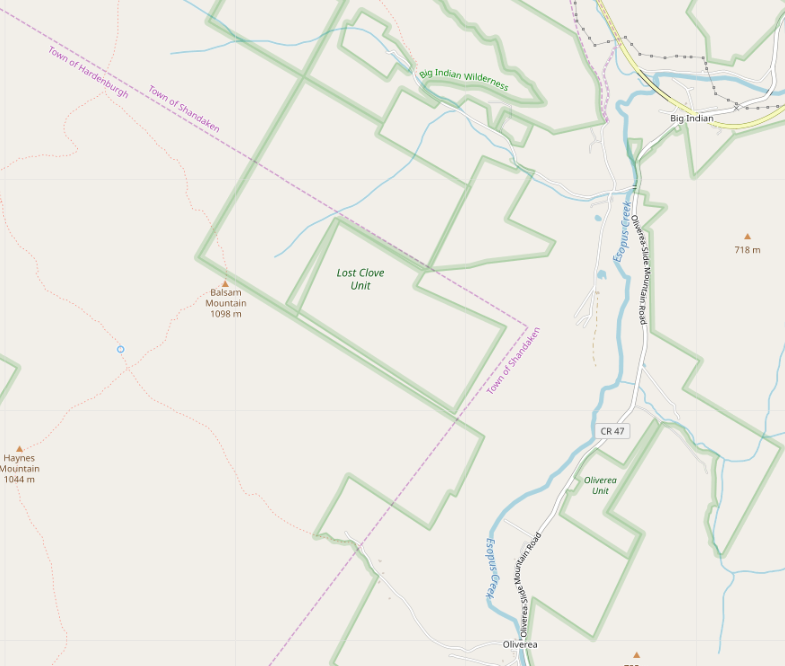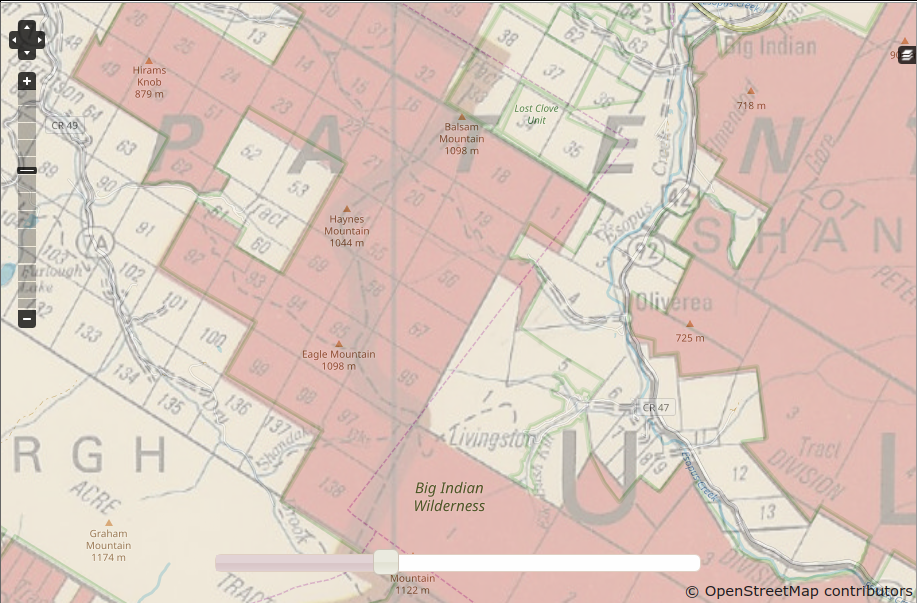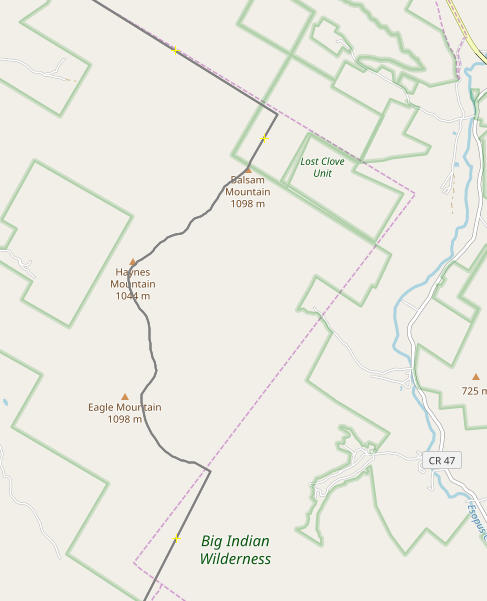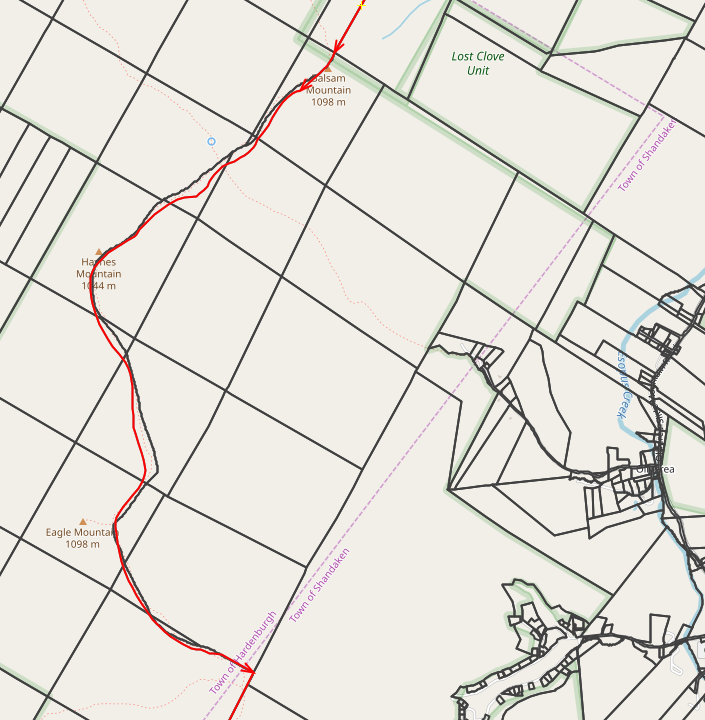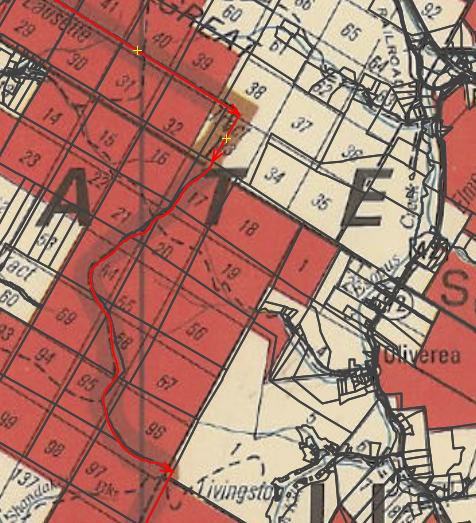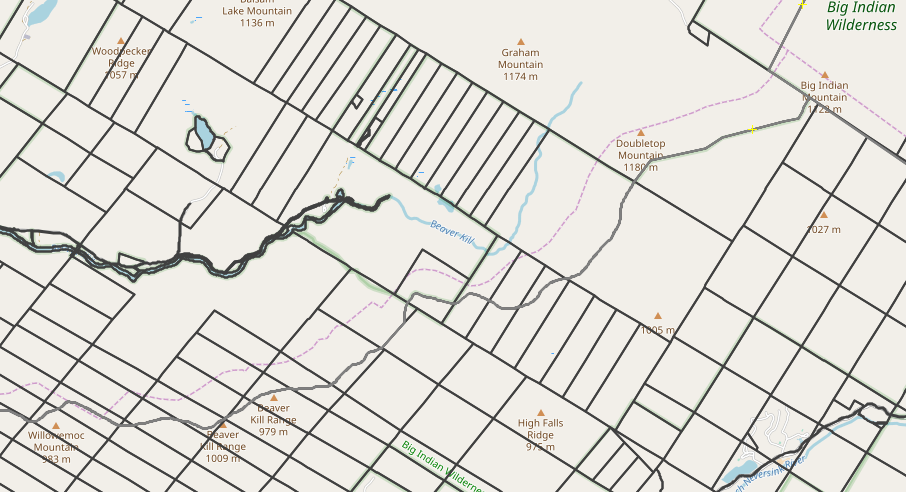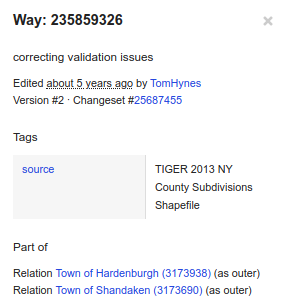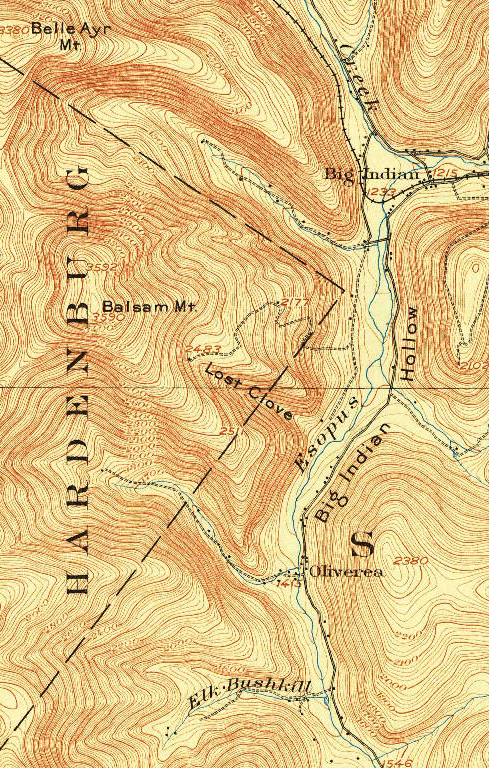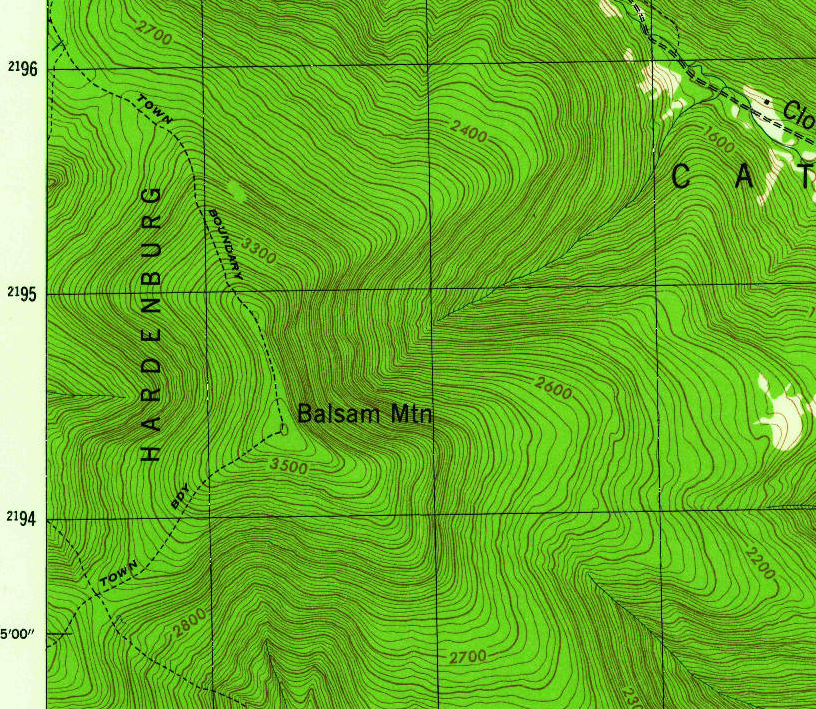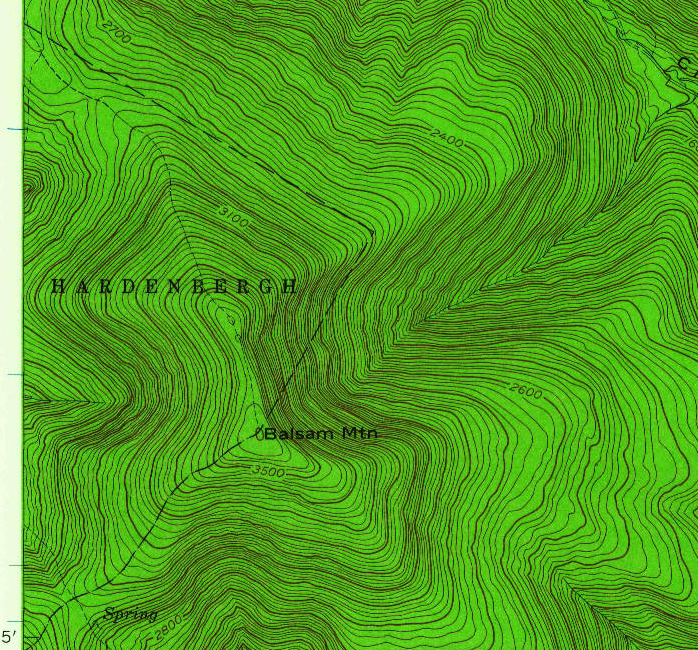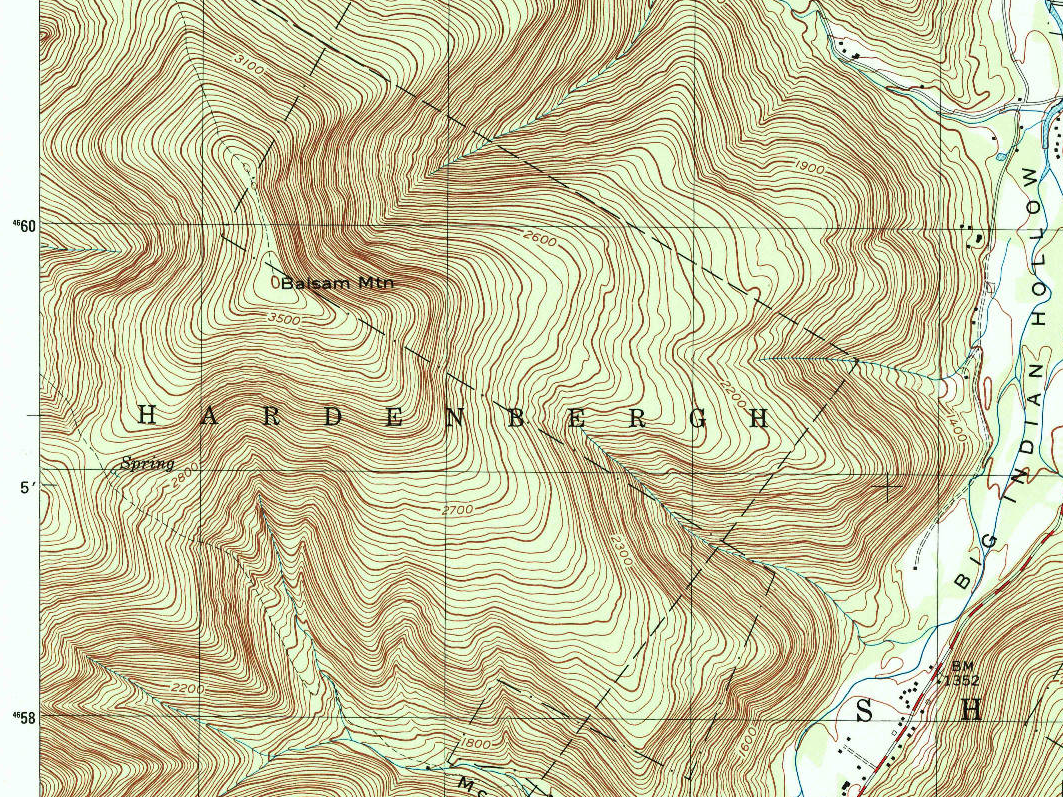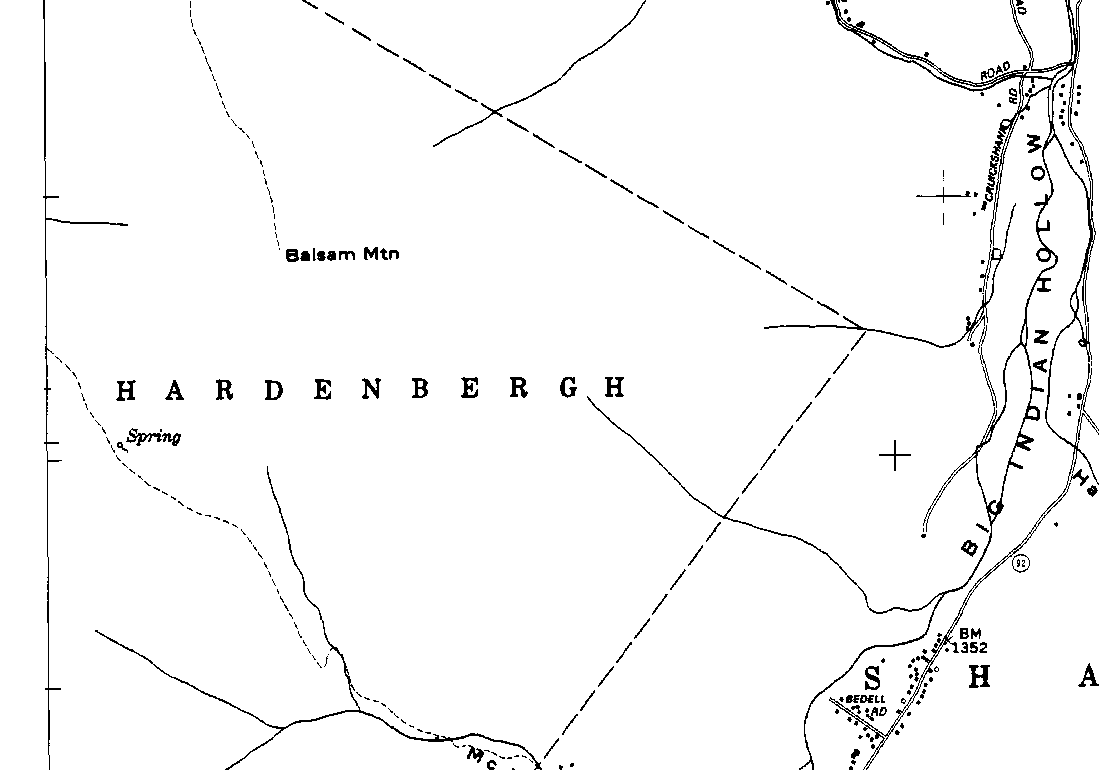(Disclaimer: I am not a lawyer, and none of this is intended to be
legal advice. I do, nevertheless, consider myself to be an informed
layman - and offer this analysis as a starting point for research into
the legal status of GIS data in New York, with citations to relevant
law, court cases, and commentaries from both sides of some of the
controversies. I do not purport it to be an unbiased analysis; as and
OSM contributor and otherwise as an ‘open sourcerer’, I have strong
personal opinions regarding the purported ownership of factual
information. I nevertheless attempt to present the law as it stands,
even if I sometimes make the Dickensian observation that “the law is
an ass.”)
What’s up with GIS data in New York?
GIS data originating from government agencies have, for about twenty
years, been subject to considerably uncertainty and risk. This largely
stems from the fact that in many jurisdictions, the mantra that
“government should be run like a business” has led to expectations
that state and local GIS departments should support themselves on user
fees, rather than from the general fund. The most lucrative source of
these fees has been the “multiple listing services” used by real
estate agents to exchange data about houses on the market. These
services often pay handsomely, far in excess of the cost of
reproduction, for the maps of tax parcels. These provide the agents
with the boundaries of properties listed for sale.
It is worth noting that in this discussion, I refer to State and local
data. It has always been held that works prepared for the US
Government by a government employee engaged in the performance of
official duties are in the public domain. Works produced by
contractors, depending on the terms of the contract, may be
protected by copyright. Ordinarily, in this case, the copyright
holder will be identified prominently. Those who use public data
promulgated by a Federal agency have little to fear.
With the advent of broad use of the Internet in the 1990’s, more and
more GIS data belonging to the States have been exchanged in digital
form. This exchange has meant that the cost of reproduction has fallen
to nearly nil, and the sale of such data is openly meant to defray the
cost of the original work. The courts have had a mixed reaction to
this, and the way that it tends to come into apparent conflict with
the Freedom of Information laws passed in the various states.
For data belonging to the counties, New York State endures a
particularly murky legal situation. In particular, Suffolk County was
a bellwether in attempting cost recovery for its production of the tax
maps.
The Suffolk County case - origins
In 1971, the county separated its Real Property Tax Servicce Agency
from its Department of Public Works, and provided a USD2.8 million
initial funding resource in the form of a cost transfer from Public
Works for the preparation of the tax maps. At the time, the maps were
drawn by skilled drafters in pen and ink on plastic film. In 1974, the
first edition of the tax maps was completed, and the county filed for
copyright registration on the maps.note-1 Upon securing the copyright, the county commenced
negotiatons with Real Estate Data, Inc. (REDI) to reproduce the maps
in paper form and market them to the general public. The eventual
agreement resulted in a USD25,000 annual payment from REDI to the
county, an additional payment of 5% of REDI’s gross sales, and a
promninent display of Suffolk County’s copyright notice in every
edition of the maps.
In the early 1980’s, REDI changed corporate control several times. As
a result, the court papers variously refer to REDI, Information
Systems and Services, Inc., Thomson-Ramo-Wooldridge (TRW), Experian
Data Services, First American Real Estate Solutions, and possibly
others. (Astute readers will note that several of these names are
associated with one of the ‘big three’ US credit-reporting
bureaux. The corporation was unsympathetic defendant even at the time
of the court case discussed here.) After one of its changes of
control, the agreement allowing it to copy and distribute tax maps was
abrogated or allowed to lapse. The specifics are unclear, but all
parties substantially agreed that no agreement was in force by the
mid-1980’s.
With no agreement in force, REDI continued to sell copies of the maps,
but no longer received updated information from the county. The county
was concerned both about the loss of revenue and the complaints that
it received about obsolete maps, and in 1999, filed suit against
Experian for declaratory and injunctive relief, and for monetary
damages for copyright infringement. The cited article
note-2
details a timeline of the case.
The Suffolk County case - the defense
Experian offered no argument, at least in the initial proceedings,
that it had not made and distributed copies of the tax maps. Instead,
it moved to dismiss the case, on the theory that as a matter of both
public policy and law, the county could not own a copyright on the
maps. The US District Court for the Southern District of New York
disagreed, and ruled that nothing in US copyright law forbade a State
or local government, as opposed to the Federal government, from
registering, owning and prosecuting a copyright.
Experian moved for reconsideration, and presented the argument that,
while Federal law might not forbid a State from enforcing a copyright
in its documents, New York’s Freedom of Information Law (FOIL) did
forbid it. It cited advisory opinions offered by the New York State
Committee on Open Government note-3 (and the court cases
referenced therein) that argued that failing to disclose the tax maps
or requiring contracts restricting their public redistribution ran
against the FOIL. Upon analysis, the court agreed, and dismissed the
county’s case. The county appealed.
The Suffolk County case - the decision
The Second Circuit court of appeals decided the case, issuing its opinion on 25 July 2001. note-4
Since the ruling was on a motion to dismiss, there was no finding of fact.
All of the court’s opinions are on matters of law.
The defendant’s first argument was that the county had failed to state
a claim. As the court observed, “The issue is not whether a plaintiff
will ultimately prevail but whether the claimant is entitled to offer
evidence to support the claims” - construing all the facts in the light
most favorable to the claimant.
The court found that the Copyright Act of 1909 had no restriction on
state’s asserting copyright over their works for hire. (For example, a
state or local government, could commission a piece of public art, and
retain copyright over it if it was contracted under a work-for-hire
agreement.) The tax maps could be “original works of authorship” and
protectable under copyright.
Copyright law requires that copyright be claimed over an “original
work of authorship.” Bare facts that do not originate with the author
of the work do not qualify, and the “sweat of the brow” in compiling
them does not by itself imbue them with originality. Rather, a work is
copyrightable only if “it possesses at least some minimal degree of
creativity.” note-5 First American had
argued that the tax maps contained no original protectible elements,
and in the alternative, argued that any original elements were not
subject to copyright protection befcause they were dictated by state
law and regulations. Suffolk had responded that “tax maps contain a
substantial amount of original material, research, compilation and
organization wholly original with the plaintiff.”
The court found that it needed to focus on “the overall manner in
which [the plaintiff] selected, coordinated, and arranged the
expressive elements in its map, including color, to depict the map’s
factual content.” (What this focus means in the context of GIS data is
surely not clear to me!) It found that Suffolk’s allegation was
sufficient to present a question of fact for a jury to decide. Alas,
its phrasing was atrocious: “The District Court thus correctly found
that Suffolk County has sufficiently alleged that its work is
protected.” (More on this later!)
The defense had also presented the argument that New York’s FOIL
abrogated Suffolk’s copyright, The State also intervened as amicus
curiae, asserting its interest in the open sharing of the maps. In a
lengthy argument, the Court concuded that the statutory language of
FOIL was in fact silent as to the operation of coyprights. It further
concluded that the advisory opinion of the Committee on Open Government
should be accorded no deference, since it was advising on the operation
of Federal copyright law (over which the Committee had no advisory power)
and not on the State’s FOIL (which had already been dispensed with as
being silent on copyrights).
Finally, the defense had argued that the tax maps were in the Public
Domain from their inception. They are edicts of government, the
defense argued, by analogy to legislative statutes and judicial
opinions. The court found that the determination turns on two
considerations: whether the entity that created a work needs an
economic incentive to create or has a proprietary interest in creating
the work, and whether the public needs to have notice of a particular
work in order to have notice of the law. The court found the first
consideration to be a matter for the trier of fact - the county was,
at the very least, entitled to present evidence that the economic
incentive of copyright was necessary for the maps’ creation. The
court found the ‘fair notice’ concern to be irrelevant, since any
individual required to pay property tax surely had access to both
the law and the relevant map.
What was left, therefore for the District Court to decide was the the
extent to which the tax maps were original (rather than compilations
of fact with decisions guided strictly by regulation), and, should
they be found to be original, the extent to which the economic
incentive of copyright was needed as an incentive for their
creation. It remanded the case to the District Court for further
proceedings consistent with the opinion.
Following this judgment, the parties settled. As far as I know, the
settlement terms were undisclosed. (If that is the case, an argument
could be advanced that the failure to disclose them could itself be a
violation of FOIL.)
The aftermath of Suffolk County
The state government has continued to assert that Suffolk County’s
position is inconsistent with the Freedom of Information Law and the
Federal copyright law, correctly pointing out
that certain relevant facts were never determined by the lower court:
On appeal, the Second Circuit Court of Appeals held that in general,
New York State, local government, and Suffolk County may claim a
copyright protection under the Copyright Act. In contrast to the
Federal Government, which is prohibited from obtaining copyright
protection for its works (17 USC §105), the Second Circuit found
that “the Copyright Act is silent as to the rights of states or
their subdivisions” and that “[b]y specifying a limitation on
ownership solely against the federal government, the Copyright Act
implies that states and their subdivisions are not excluded from
protection under the Act.” County of Suffolk v. First American Real
Estate, 261 F.3d 179, 187 (2nd Cir. 2001).*
Due to insufficient evidence, however, the Second Circuit remanded
the matter concerning whether the maps were sufficiently original
and creative to qualify for copyright protection, or whether the
content and the form of the maps were dictated by state law and
regulation and thus not subject to copyright protection. Further,
the Second Circuit opined, it would be for the District Court to
determine whether the tax maps were in the public domain from
inception, and thus outside the coverage of the Copyright Act. To
make this determination, the District Court would have to consider,
most importantly, whether the County needed the economic incentive
of the Copyright Act to create the maps, or whether it had adequate
incentives or obligations to produce their respective materials.
The Committee further went on to advise:
Conditioning the release of copies on contractual agreements
governing future treatment of the copies, in our opinion, would
thwart the very purpose and intent of the Freedom of Information
Law. It is our belief that when materials are accessible under the
Freedom of Information Law, upon receipt of the appropriate fee,
they must be released to the applicant without
restriction. Accordingly, in keeping with the Second Circuit
decision in County of Suffolk, we advise that it is permissible for
the County to notify the applicant that the materials may be subject
to copyright protection, but that the County cannot condition access
on a contractual obligation pertaining to redisclosure of records
accessible to any member of the public.
and the opinion also addresses the fact that it is impermissible to
use reproduction fees to cover anything but the cost of reproduction:
… although compliance with the Freedom of Information Law involves
the use of public employees’ time, the Court of Appeals has found
that the Law is not intended to be given effect”on a cost-accounting
basis”, but rather that “Meeting the public’s legitimate right of
access to information concerning government is fulfillment of a
governmental obligation, not the gift of, or waste of, public funds”
[Doolan v. BOCES, 48 NY 2d 341, 347 (1979)].
note-6
It has continued to issue advisory opinions of a
similar nature as recently as 2015. note-7
Nevertheless, much of the press had taken the Suffolk County
decision as a statement from the Second Circuit that tax maps are
protected by copyright (a decision that it never reached). In fact, I
vaguely recall a case from about a decade ago (to which I have mislaid
the citation) in which New York City asserted similar claims against a
copyright defendant, and the lower court took as given the misreading
that tax maps are protected by copyright, finding the defendant liable
on the pleadings, since the fact of copying was uncontested. (The case
was mooted before an appeal could make its way through the system by
the passage of New York City’s Open Data
Law note-8).
Most New York counties, in this legal situation, continue jealously
to guard their cadastral data in the hopes someday of securing significant
cost recovery through licensing revenue.
What does all this mean for OSM’s use of New York Government data?
Despite all the legal turmoil, the prospect for using New York government
data in OSM is actually fairly bright.
Data produced by and for the New York State government and listed in
the gis.ny.gov data catalogue are pretty
much fair game. The state government has consistently held for more
than two decades that its data are public (with certain narrow
statutory exemptions related to confidentiality and homeland security)
and that they are free to all comers. Occasionally, the agency that
produced an specific data set will request acknowledgment as a
courtesy, and we can certainly satisfy that request on
the Contributors
page.
New York City’s data are also fair game, owing to the sweeping scope of
its Open Data Law, which also leaves little room for the city to escape
its obligation to make its operational data open and free to share.
Cadastral data, and data in general from the individual counties apart
from New York City, is a mixed bag. The state has requested that the
counties make parcel data available, but the response from the
counties has been slow. As of this
writing, 21 counties have resolved to
make their tax parcel data public.
In addition, New York State has asserted that it has an unquestioned
right to publish data about the parcels that it owns in allodium. (New
York is the sovereign; it cannot own parcels in ‘fee simple’ since there
is no superior title to which it answers.) It therefore publishes state-owned
parcel data for all 61 counties.
I had previously had reservations about the legality of importing New
York’s
address point data because
the address points were supplied by the counties, and in many cases
were derived from parcel centroids. (If the parcel boundaries, devoid
of other metadata, are the subject of copyright, why not their
centroids?) I therefore counseled that people should proceed with
caution in the forty counties that have not agreed to share their
parcel data. My fears have been dispelled by a recent e-mail sent by
Frank Winters to an OSM contributor, confirming that the data may be
used without restriction or license for any lawful purpose. We can
safely presume that the state government would not offer rights
that are not theirs to give.
We should, as a project, retain a copy of Mr Winters’s e-mail including metadata, against any future inquiries regarding the data from gis.ny.gov. What is a proper repository for this messsage?
Given the legal uncertainty, extreme caution is still needed for county and municipal data outside
New York City that have not been blessed by NYSGIS!
People searching OSM contributions for my user name (ke9tv) will find
the occasional parcel of public land in which I cite ‘XXX county tax
rolls’. In all such cases, either the given county is one of the 21
that have given permission, or the tax rolls were used as one of
multiple data sources in an effort to resolve boundary
inconsistencies. In all cases where the tax rolls were consulted, the
parcels were redrawn before uploading and there will be at least
hairline differences between OSM’s copy and the county’s. Nothing
remains of any artistic decisions made by the person who produced the
original map. Nor does anything remain of the selection, sequence and
arrangement of the data, since only individual parcels were extracted
and any selection was mine alone. Since US law recognizes no copyright
on the bare facts, I believe myself to be on an entirely firm legal
footing.
Notes
note-1. note-2. Most of the factual account of the
prosecution history of the case derives from Penny Wells
LaValle,
Tax Maps and the Legend of the Dragon Slayer. _Geographic
Information Systems Technology News 3:_2 (Fall/Winter 2001).
note-3.
The
New York State Committee on Open Government
has a name that sounds as if it might be an NGO, but it is in fact an
agency of the Department of State responsible for overseeing and
advising the government, the public and the media regarding New York’s
Freedom of Information,
Open Meetings,
and Personal Privacy Protection
Laws.
While its opinions are advisory in nature, the Executive Branch offers
them extreme deference (partly because most members are members of the
administration; the Lieutenant Governor, the Secretary of State, the
Director of the Divison of Budget and the Commissioner of the Office
of General Services serve ex officio; four more members are
appointed by the Governor, while one member is appointed by each house
of the State Legislature). The opinions may be presumed, absent evidence
to the contrary, to be the official policy of the State.
County and local governments, as we see here, are more inclined to
reject the Committee’s advice and challenge it in court, as we see
here.
Relevant opinions presented to the District Court in relation to the
Suffolk County case include:
-
Robert J. Freeman, Executive Director, New York State Committee on
Open Government, letter to Kenneth W. Lovett, President, Virtual
Information Systems, Inc., 5 January 1993
FOIL-AO-f7507.
(opining that the contents of a GIS system are “statistical or
factual tabulations of data” and thus not exempt from FOIL)
-
Robert J. Freeman, Executive Director, New York State Committee on
Open Government, letter to Kenneth W. Lovett, President, Virtual
Information Systems, Inc., 7
May 1997. FOIL-AO-f10072
(specifically opining that Suffolk County’s practice of charging a
reproduction fee of USD4.00 per map was both in excess of the cost
of reproduction and inconsistent with the FOIL, and moreover
advising that the county could not skirt the issue by invoking the
“unless a different fee was established by law” exception, since a
mere committee of the county legislature did not have the power
under statute to impose such a fee.)
-
Robert J. Freeman, Executive Director, New York State Committee on
Open Government, letter to Robert N. Brower (Cayuga County Planning
Board), 29 December 1998
FOIL-AO-f11230.
(advising that the FOIL may require transmission of computer records
in machine-readable form, while not requiring that new software be
developed or new data entry conducted to produce such records, and
urging that the Legislature consider adding language to the FOIL to
require that computer databases be designed to provide easy
redaction of private or security-sensitive information, so that FOIL
requests can be answered without reprogramming.)
note-4
County of Suffolk, New York, v. TRW. 261 F.3d 179 (2001).
note-5
Feist Publ’ns, Inc. v. Rural Tel. Serv., Co., 499 U.S. 340 (1991)
note-6
Camille S. Jobin-Davis, Assistant Director, New York State Committee on Open Government, letter to [redacted recipient], December 19, 2005 FOIL-AO-15695
note-7
Robert Freeman, Executive Director, New York State Committee on Open Government,
e-mail to [redacted], 6 February 2015 FOIL-AO-19246
note-8
New York City Local Law 11 of 2012.
note-9
Frank Winters (Geographic Information Officer, New York State Office
of Information Technology Services), e-mail to Skyler Hawthorne, 17 July 2021,
copy (with metadata) mirrored at https://kbk.is-a-geek.net/attachments/20200719/winters_20200717.txt

